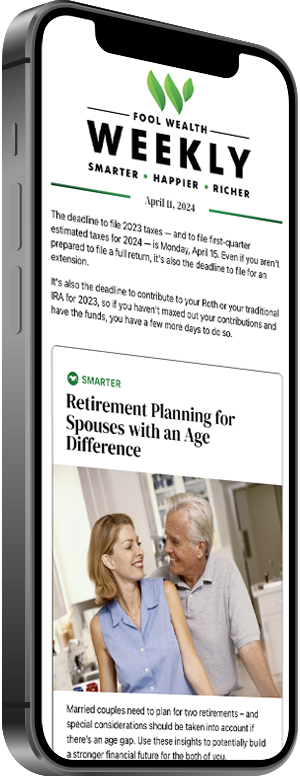Debt is often considered a four-letter word. When leveraged strategically, however, it can be a powerful financial tool for seeking new opportunity and building wealth over the long-term.
Let’s be crystal clear though: We believe there are some types of debt that are just downright dangerous to your financial wellbeing and should be eliminated as soon as you’re able.
The question is, how do you know whether you’re taking on “good debt” or “bad debt,” and what could be the best ways to pay it down? Let’s take a look at the different types of debt and the considerations that go into building a thoughtful debt repayment strategy.
Defining “good debt” and “bad debt”
Before we dive in, a word of caution: We believe that any debt you cannot manage to pay back (while balancing your other financial obligations) should be avoided—or at least reassessed with extreme caution. Even what you may consider “good debt” (which we’ll define in a moment) can potentially wreak havoc on your financial wellbeing if you’re unable to handle the costs.
Now, here’s what we mean when we say “good debt” and “bad debt”:
"Good" debt: This type of debt may help you achieve your financial goals, pursue new opportunities, generate income, or build your net worth over time. The most common forms of good debt may include mortgages (for your home or an investment property), federally subsidized student loans, and business loans.1
"Bad" debt: This type of debt tends to carry higher interest rates, and it’s most commonly used to purchase assets with depreciating values. Generally speaking, we believe credit card debt (which can be used to purchase virtually anything) is a form of bad debt, as well as personal loans or payday loans. To us, auto loans are a bit of a gray area, but since cars are a depreciating asset (aside from some collectible models), they could be considered a form of bad debt too.1
Should you pay it down as fast as possible?
Figuring out how to pay down debt strategically is important—as it can influence your greater spending and saving strategy. Should you aim to become “debt free” as soon as possible? Where do you start? Is it better to just pay the minimum for the length of some loans?
The answer to these questions will depend on a few key factors, so let’s break it down a little further.
Interest rate and loan terms
First, consider the interest rate. High-interest rate debt can snowball quickly into bigger and more unmanageable debt. Some loans may have high enough interest rates that simply paying down the minimum amount on the loan isn’t enough to draw down the balance—over time, the balance actually increases even as you continue paying down the debt.
Called “negative amortization,” this will typically happen with income-based repayment plans (which are available for some debt, including student loans) since the minimum monthly payment does not exceed the monthly accrued interest.2 Needless to say, we believe it’s best to avoid negative amortization, so we would recommend choosing a repayment plan that ensures the minimum monthly payment covers the monthly accrued interest.
But generally speaking, the higher the interest rate, the more expensive it becomes to pay off your debt over time. You may also want to look into the terms of the loan, as some loans may restrict your ability to pay them off early or add additional payments to the principal amount.
Personal feelings around debt
You may feel especially inclined by your beliefs or values to pay debts down as soon as possible. Some people like the security of having their home totally paid off, and that’s what they choose to prioritize within their financial plan.
Or, if you’ve always aspired to achieve a “debt-free” lifestyle, you may be motivated to pay everything off as soon as you’re reasonably able.
Other financial obligations and goals
The key phrase in that last sentence? “Reasonably able.”
While the thought of putting every last dollar and dime toward paying down debt may sound doable in theory, you need to be realistic and holistic in developing your debt repayment strategy. Much like crash diets for weight loss, going all in is exciting at first, but can be unsustainable.
If you’re interested in paying down debt more quickly than the original repayment terms, you’ll need to put more money toward the principal balance of the loan. For example, if your monthly mortgage is $2,000, you may choose to pay $2,500 each month instead to pay down the loan faster.
Before doing this, however, you’ll need to decide how much extra you can put toward debt—and which debt to focus on first. For example, pay the minimum payment amount on each loan (mortgage, car payment, credit card, etc.) first before paying more on any one particular loan. Then, you need to look at your other financial obligations—utilities, groceries, emergency fund, and savings goals—to make sure you’re able to cover those recurring expenses as well.
Once you account for your other financial obligations, figure out how much of your discretionary income you can reasonably reallocate toward additional debt repayment. If you’re able, set up recurring auto-payments so you can continue paying extra toward your loans without even thinking about it.
Investment strategy
If your loan’s interest rate is particularly low (say, you snagged a sub-three percent mortgage in 2021), you may want to consider whether you could potentially be financially better off paying down the loan early, or using those funds towards your investment portfolio instead.
In other words, compare the cost of debt to the potential return on investment if you choose to invest the money instead. Remember, all investment involves risk and many lose money (including principal). And of course, investment returns aren’t guaranteed—but it still may be worth weighing your options if you’re comfortable maintaining the debt for longer and reallocating those additional payments to a strategy that potentially could grow over time.
The key here is to use the money you would have put toward paying down debt into an investment with the goal of having it grow—rather than feeling tempted to spend it as “fun money.”
Two common debt repayment strategies
There are two similar, yet distinct, debt repayment strategies called the snowball method and the avalanche method. Both can help you manage debt repayment in a more strategic and impactful way—though they take time, patience, and discipline.
The primary difference between these two methods is whether to focus on the size of the loan or the interest rate.
Snowball method
The snowball method prioritizes paying down the smallest loan first—no matter the interest rate. While you'll continue paying the minimum on each loan, any additional loan repayment goes toward the smallest loan until it’s been fully repaid.
Then, you'll use all the money you were putting toward the smallest loan (including the monthly minimum and your additional amount) and use it to pay off the second smallest loan—all the way through until you’ve paid off every loan. Each time a loan is paid off, you'll use the money you were putting toward the now-paid-off loans and put it toward the one you’re actively working to pay down.
The benefit of the snowball method is that you can experience your first “victory” so to speak fairly early on (since you’re starting with the smallest loan). Successfully paying off one loan can help you stay motivated toward paying down another.
Avalanche method
The avalanche method prioritizes paying down the loan with the highest interest rate first—no matter the size of the loan. Other than that, it works just the same as the snowball method. Once you pay down your first loan, you'll put those funds toward paying down the next one, and so on.
The avalanche method may help you save more on interest payments in the long run, though this depends on the size of your loans and interest rates. However, it can take longer for you to successfully pay down your first loan, which may make it harder to stick to the plan.
Managing your debt
With the understanding that not all debt is created equal, you may have a greater appreciation for just how vast and varied the world of borrowing can be. Consider your financial situation holistically to better understand how to prioritize paying down debt, where to start, and what you’ll do with the extra funds once the loan’s been repaid.

Like what you're reading?
Join the thousands of readers getting stories like this delivered straight to their inbox every Thursday — for free. Give it a spin, enter your email to sign up.
Sources:
1 “Good Debt vs. Bad Debt.” Equifax. Accessed October 22, 2024.
2 “Tips for paying off student loans more easily.” Consumer Financial Protection Bureau. Accessed October 22, 2024.
3 “What is the national debt?” Treasury.gov. Accessed October 22, 2024.
Related Articles

Sports Betting Is on the Rise. Here’s Why Investors Should Proceed with Caution
For as long as there have been sports (we’re talking since the first Olympics in ancient Greece),...

Digital Nomad? Here’s What You Need to Know About Taxes
As the world becomes increasingly interconnected—and virtual work opportunities remain prevalent...

How to Reduce Sequence of Returns Risk
It’s not unusual to have a year in which the overall market is down at least 10%. It’s not even...
